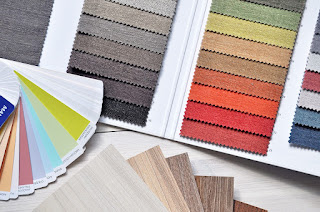Japanese Approaches to Interior Design: Achieving Harmony, Simplicity, and Zen
Japanese interior design is celebrated for its distinctive fusion of aesthetics, drawing from ancient traditions, an abiding reverence for nature, and the pursuit of equilibrium and serenity. It's not merely about decorating a space; it's about crafting an environment that elevates well-being and nurtures a profound sense of tranquility. In this article, we'll explore the foundational principles of Japanese interior design and how you can integrate them into your own living spaces.
Lucy Soto
Embracing Minimalism
At the heart of Japanese interior design lies minimalism. Here, less is more. The primary objective is to cultivate a feeling of openness and simplicity within your living space. Clutter is viewed as an adversary, and the ultimate aim is to retain only the essentials in the room. This approach fosters mental clarity and provides space for deeper reflection and contemplation.
Natural Elements and Materials
The essence of nature plays a pivotal role in Japanese design. The use of natural materials such as wood, stone, and bamboo is fundamental. These elements evoke a sense of tranquility and grounding. Whether it's bamboo flooring, a wooden shoji screen, or stone countertops, the incorporation of natural materials in your home establishes a connection to the outdoors, creating an organic and harmonious atmosphere.
Shoji Screens and Sliding Doors
Shoji screens are iconic in Japanese interior design. These translucent paper screens, encased in wooden lattice frames, bestow a sense of openness while concurrently ensuring privacy. Beyond their utilitarian function, shoji screens diffuse light in a sublime manner, casting a soft and peaceful glow throughout the room.
Tatami Flooring
Tatami mats serve as the traditional Japanese flooring, fashioned from natural materials such as rice straw and rush grass. These mats are not solely comfortable for seating or slumber; they also instill a sense of grounding and a profound connection to the Earth. Tatami rooms are versatile and can transition seamlessly from bedrooms to living spaces or even meditation sanctuaries.
Wabi-Sabi: Imperfect Beauty
Wabi-sabi encapsulates a Japanese philosophy that celebrates the allure of imperfection, transience, and the passage of time. In interior design, this translates into the appreciation of weathered and aged items. Consider a ceramic teapot with cracks or a well-worn wooden table. These elements narrate a story and introduce a distinctive character to the space.
Zen and Suikei
Zen principles play a vital role in Japanese design, emphasizing mindfulness and the art of being present in the moment. Suikei, akin to Feng Shui, is employed to harmonize the energy flow within a space. When arranging furniture and decor, you should ponder the energy flow to establish an environment of serenity and balance.
Minimal Color Palette
Japanese interior design typically adheres to a minimal color palette, with a preference for neutral tones such as white, beige, gray, and muted pastels. This color scheme fosters an uncluttered and calming ambiance, with any accents arising from natural elements and thoughtfully chosen decor.
Bonsai and Ikebana
The inclusion of Bonsai trees and Ikebana flower arrangements infuses the living space with living art. Bonsai, with its meticulously pruned miniature trees, and Ikebana, the art of crafting simple yet elegant floral arrangements, are essential components of Japanese design. They introduce a sense of equilibrium and serenity.
Incorporating the principles of Japanese interior design into your home can yield a serene and harmonious living space. Whether you opt for complete immersion in these concepts or infuse a touch of Japanese aesthetics into your decor, the result is an environment that exudes serenity and balance, nurturing mindfulness and inner peace. Japanese interior design is a timeless art form that can inspire anyone in search of a more balanced and harmonious life.
Integrating Chromcraft's Metal Bar Stools into Japanese-inspired Home Decor
For those aiming to infuse a dash of eclectic flair into Japanese-inspired home decor, Chromcraft's metal bar stools can be a perfect addition. These stylish and versatile bar stools, with their sleek metallic finishes and contemporary designs, offer an intriguing blend of American and Japanese aesthetics. Their modern yet minimalistic lines harmonize seamlessly with the clean and simple aspects of Japanese interior design. The metal elements introduce a touch of modernity to the space while staying true to the reverence for natural materials. It's a fusion of two worlds, where the industrial chic of Chromcraft's bar stools can complement the serenity and balance of Japanese decor, creating a unique, eclectic atmosphere in American homes. This fusion represents an homage to the beauty of global design influences and offers a fresh perspective on how different styles can come together to create something truly distinctive and inviting.



Comments
Post a Comment